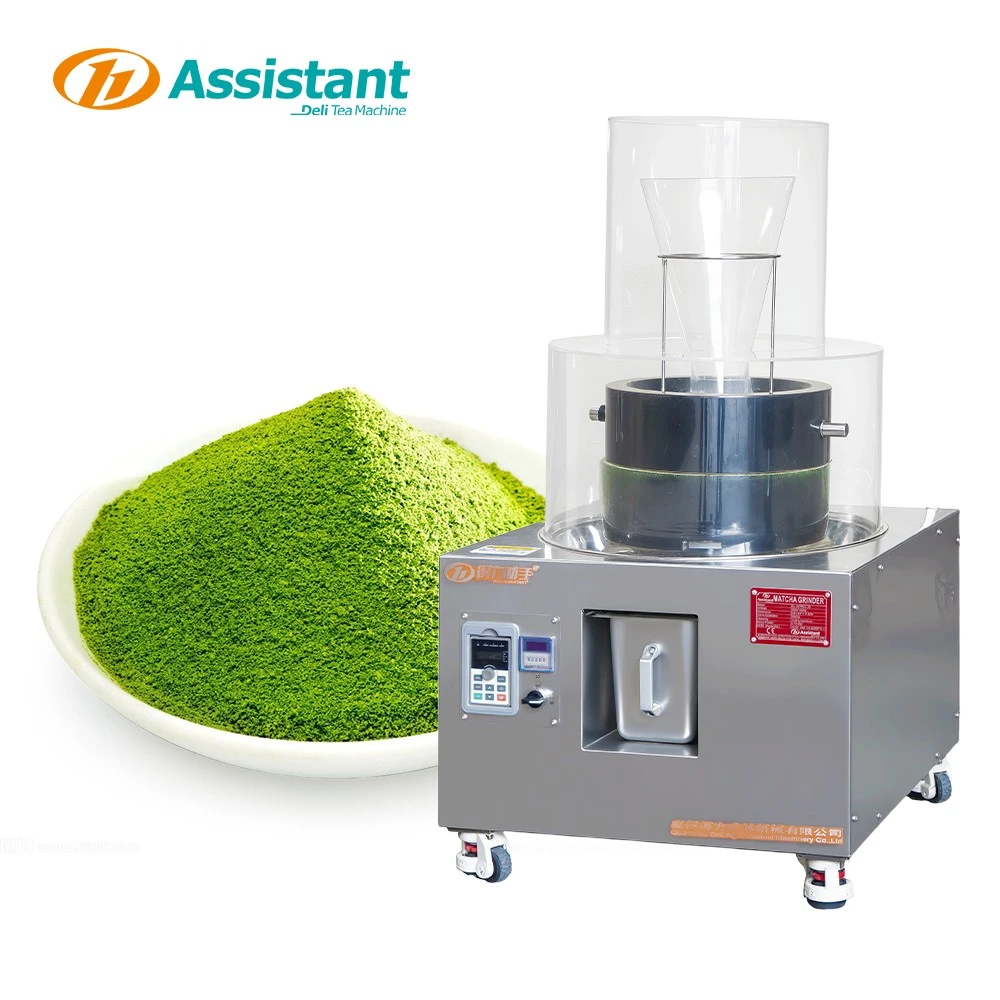DL-6CYMJ-32 Electric Black Gold Stone Matcha Grinder: grinds to ≤15μm, capacity ~50g/h, 0.55KW. Ideal for premium, small-batch fine matcha.
DL-6CSTL-CM50 for processing Green/Oolong tea, use wood, coal or pellet fuel heating, drum diameter 50cm, length 260cm, speed and temperature adjustable. Capacitu about 50 kg per hour.
DL-6CSTP-D110 for processing Green/Oolong tea, use wood, coal or pellet fuel heating, drum diameter 110cm, length 100cm, speed and temperature adjustable. Capacitu about 100 kg per hour.
DL-6CSTL-Q80 for processing Green/Oolong tea, use wood, coal or pellet fuel heating, drum diameter 80cm, length 400cm, speed and temperature adjustable. Capacitu about 150 kg per hour.
DL-6CFX-435 can used for all kind tea, through the volume of air blowing, different weight tea are blown to different positions and screened out through the corresponding outlet, 5 different sizes of tea can be selected.
DL-6CFX-F30-3QB is a new type of tea screening equipment developed by our company, It can separate fresh leaves and finished tea in one machine. It can save money and workers. It can adjust the speed of screening and wind speed. It is a necessary good helper for tea factory!
DL-6CYQT-6105 mainly used for Oolong tea processing, drum made of bamboo, the activity of withered tea was increased by shaking, It can make tea taste more fragrant, Capacity about 32 kg per batch.
This machine is suitable for the shaping and roasting process of high-grade curly tea. Tea roasted by this machine features tight and neat strips, uniform curling, bright green color, visible white fuzz, and rich aroma—fully demonstrating the characteristics of high-quality tea. The machine's heating system offers two options: electric heating and liquefied gas heating, allowing users to choose flexibly based on their actual needs.
Matcha is far more than a trendy beverage—it’s a product of centuries of cultural heritage, with roots stretching back to Tang Dynasty China (618–907 AD). Back then, tea farmers began steaming fresh tea leaves (instead of frying them) to lock in their bright color and nutrients, creating the earliest form of “steamed green tea.” This was ground into a fine powder, though it wasn’t yet the “matcha” we know today.

The practice evolved dramatically in the Song Dynasty (960–1279 AD), when scholars and nobles embraced “diǎn chá” (whisked tea)—a ritual where powdered tea was mixed with hot water and whisked into a frothy brew. It became a centerpiece of social gatherings, even spawning “dòu chá” (tea competitions), where participants judged the froth’s thickness and color.
In the 12th century, the Japanese Buddhist monk Eisai brought matcha seeds and preparation techniques back to Japan. There, it merged with Zen Buddhism’s minimalist philosophy, evolving into the formal “chanoyu” (tea ceremony)—a practice that honors mindfulness, simplicity, and respect for nature. Over time, Japan refined matcha production, making it a global symbol of elegance.
Ancient matcha making was a labor-intensive, reverent process—no shortcuts, just patience and precision. Here’s how it was done:
For ancient Chinese and Japanese cultures, matcha was never just a drink—it was a ritual.
Today, matcha has broken free from traditional ceremonies to become a versatile ingredient in sweet and savory dishes. Here are some creative modern uses:
If you’re serious about making high-end, restaurant-quality matcha at home or in a boutique café, the Black Gold Stone Matcha Grinder from Quanzhou Deli Agroforestrial Machinery Co., Ltd. is unmatched. It’s designed to honor ancient matcha-making traditions while delivering consistent, premium results.

| Feature | Details |
|---|---|
| Model | DL-6CYMJ-32 |
| Material | Black Gold Stone (ideal for low-heat grinding) |
| Processing Principle | Low-speed shearing and tearing (preserves chlorophyll and flavor) |
| Matcha Size | ≤15μm (ultra-fine, smoother than many commercial matchas) |
| Capacity | ≈50g/hour (perfect for small-batch, artisanal production) |
| Power | 0.55 KW (energy-efficient, low noise) |
| Voltage | 220V 50/60Hz (compatible with most home/café setups) |
| Dimensions | 65×68×130 cm (compact, easy to place in small kitchens) |
| Weight | 110 kgs (sturdy, stable grinding) |
Matcha’s journey from ancient ritual to modern staple is a testament to its timeless appeal. Whether you’re sipping a traditional frothy brew or biting into a matcha cookie, it connects us to centuries of culture. And if you want to make the best matcha possible? The Black Gold Stone Grinder is your secret weapon—it’s where old-world craftsmanship meets modern precision.
For more details, visit WWW.DELIJX.COM or contact Quanzhou Deli Agroforestrial Machinery Co., Ltd. via WhatsApp: +86-17750089040 or email: INFO@DELIJX.COM.